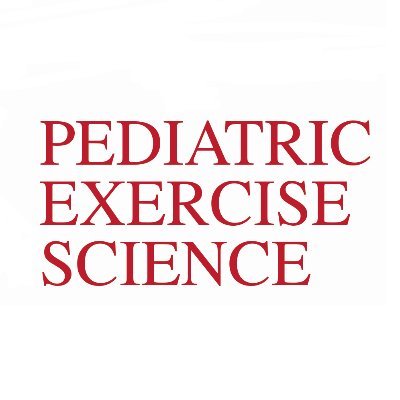
Pediatric Exercise Science
@pesjournal
Followers
439
Following
36
Media
150
Statuses
225
Official journal of NASPEM @naspem & European Group of Pediatric Work Physiology @PWP_2021. Essential reading for all concerned with pediatric exercise science.
Champaign, IL
Joined October 2019
New research from Baker et al. in young male athletes shows maturity status is key to interpreting 60m sprint & long jump performance. Physical traits matter, but growth stages create large differences. Crucial for coaches! 👋 DOI: https://t.co/7jXQ6YQyfq
0
2
4
New study by Araujo et al.: Any participation in Physical Education classes is linked to more days where teens get ≥60 mins of physical activity. Promoting more PE is key to boosting activity levels, even where participation is already high. DOI: https://t.co/EEfVSOmtrx 👍
0
1
1
✍️Rastogi et al.: Web-based PA for kids works! The "Active Children Through In-Home" study exceeded feasibility targets for recruitment & retention. Future trials should focus on novelty and peer participation to boost adherence & satisfaction. DOI: https://t.co/QKYfghiyWi
0
0
2
🚶♀️💡 New study by Raine et al: Just one bout of walking can boost learning in a virtual classroom! 🧠📚 Kids who were active before learning in VR scored higher—especially those with average IQ. Physical activity = sharper minds. DOI: https://t.co/dSjXAFuGQm
0
1
3
Validated 3-factor movement model! New study by Birklbauer et al. shows the SALTO test battery effectively assesses fundamental movement skills in preschoolers, highlighting need for age, weight, and sex-specific interventions. DOI: https://t.co/NTN0h5qtJP
0
1
1
Palmer et al. found that test of TGMD-2 and TGMD-3 similarly screen children who demonstrate below average skills (≤25th percentile), but not for specific skill level classifications, including above average, at-risk for delays, and delayed. DOI: https://t.co/hmjXr0snS4
0
0
5
Bustamante et al. found that secular trends in GMC were negative in Peruvian children, especially at 6–8 years of age. Further, body size and physical fitness trends did not affect the negative secular trend. DOI: https://t.co/Sk4vOus8oi
0
0
2
🎉 Exciting news! We’re delighted to welcome our new Associate Editors, Laura Joensuu and Ricardo Agostinete, to the Journal of Paediatric Exercise Science! Their expertise will strengthen our mission to advance research in paediatric exercise science. 💪📘
0
0
3
📣 PES Volume 37 Issue 4 is now available online at https://t.co/1sUujAEFGy Expect the latest studies about the unique aspects of the physiologic and physical responses of children to exercise.
journals.humankinetics.com
"Pediatric Exercise Science" published on by Human Kinetics.
0
1
0
Dr Alexios Batrakoulis has brought together 48 of the field’s top researchers and practitioners to build this resource. Obesity and Weight Management equips practitioners with the knowledge to safely address client needs and challenges. ➡️ https://t.co/Xhyk5OxSqo
#Fitness
1
2
3
Wong Vega et al. investigated the prevalence of documented physical activity (PA) participation and recommendations among pediatric nephrologists and identified disease-related variables that predicted which patients received PA recommendations. doi: 10.1123/pes.2023-0206
0
1
2
Kerkeni et al. found soccer-based training (SBT) appears to decrease fat mass percentage, without affecting body mass, body mass index, fat-free mass, or waist circumference in obese/overweight children and adolescents. DOI: https://t.co/pnpp90YzPZ
0
0
1
Bourke et al. found providing early childhood educator (ECE) with online training in physical activity (PA) through an e-Learning course may not be sufficient to increase PA levels among young children in their care. DOI: https://t.co/xKlSsUrILh
0
0
1
Bucko et al. found that while physical activity (PA) may be developmentally beneficial overall, it appears that its relationship with sleep duration is not clinically relevant in very young children. DOI: https://t.co/QzE2yI7pfk
0
0
2
New study by Vieira et al: More light activity & less sitting time linked to lower blood pressure in teen boys. MVPA (mod-vigorous exercise) helps reduce the negative effects of sitting. Move more, sit less! DOI: https://t.co/upFhn0aTZG
0
0
0
📣New study by Balbinot and Gerbase: Regular physical activity boosts lung function in kids & teens—regardless of weight status! BMI doesn’t mediate this effect. More evidence that staying active is key for healthy lung development. DOI: https://t.co/FUzbAfXgNY
0
1
2
Leong et al. audited the results of an exercise program for overweight and obese pediatric participants in a tertiary pediatric hospital. The main aim was to determine the program’s effectiveness, with the main outcome of change in BMI. DOI: https://t.co/5bcz5NqGpg
0
0
0
Based on Mohabbat’s study results, it can be concluded that 8 weeks of aerobic interval training can decrease ferritin and hepcidin levels, but acute aerobic exercise increases them. DOI: https://t.co/XVIPfjkrR0
0
1
2
Kouchi et al. found that an 8-week dance program improved posture, scapular position, breathing, and happiness in girls aged 10–12 years. It enhances physical health, emotional well-being, and social skills in children and adolescents. DOI: https://t.co/FsBcyz1bPM
0
0
1
We are pleased to announce that NASPEM has signed a Memorandum of Understanding with @activehealthyk1! This partnership will support the missions of NASPEM & AHKGA to promote physical activity in youth all around the globe. Learn more about AHKGA at: https://t.co/nzSfLX1SHE
0
2
5



